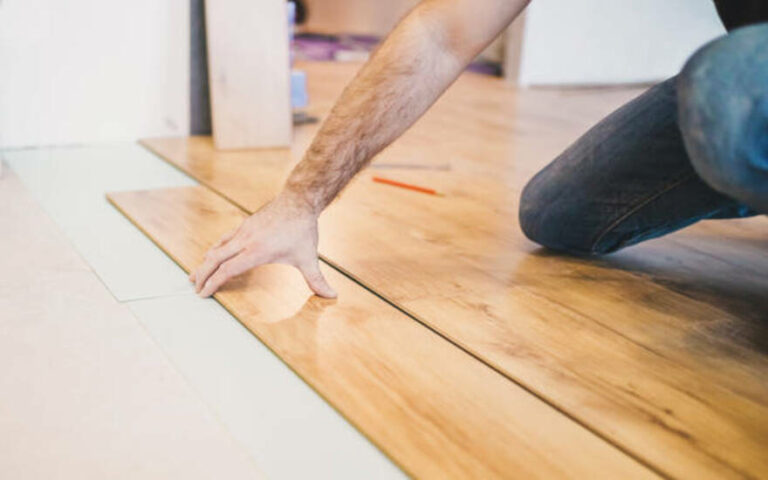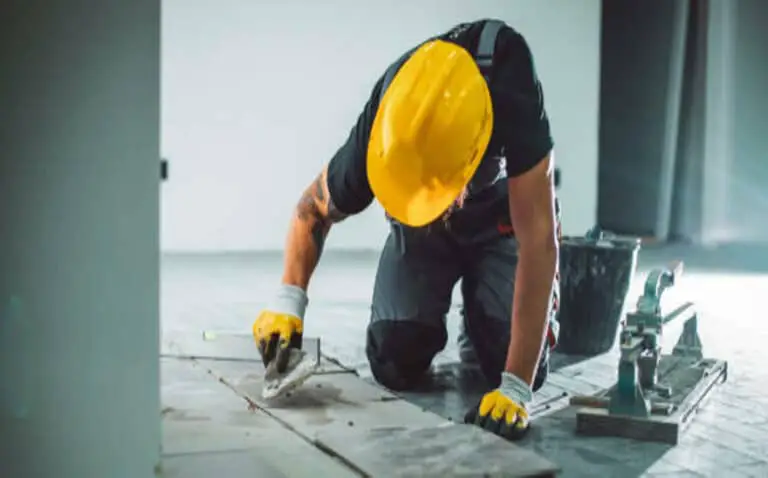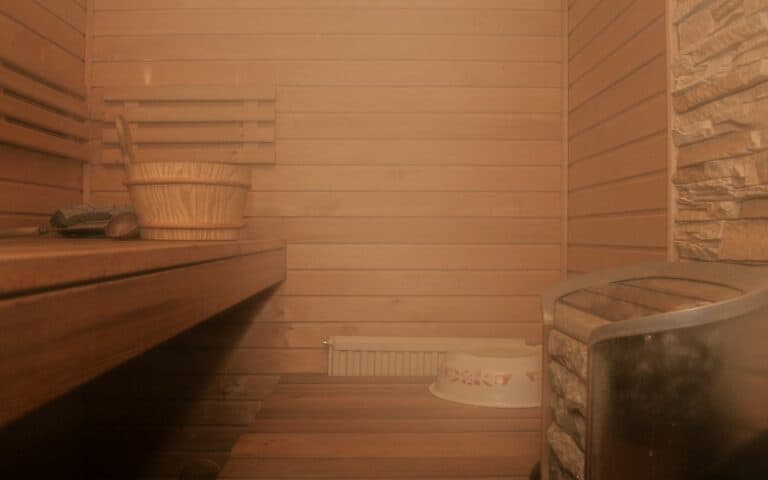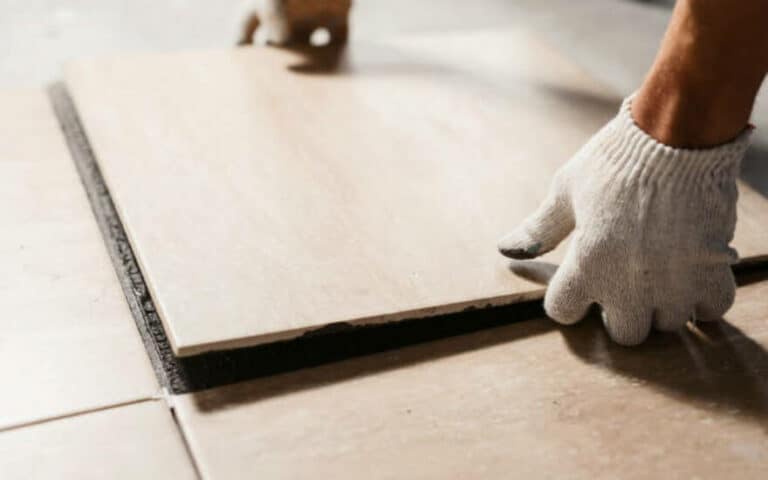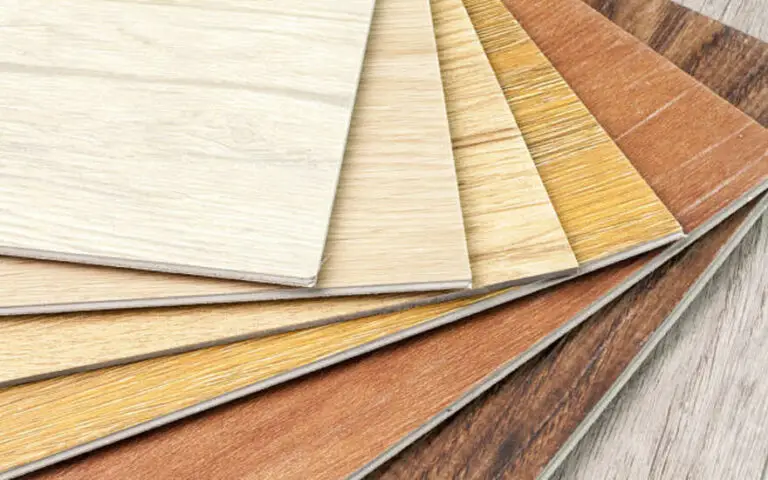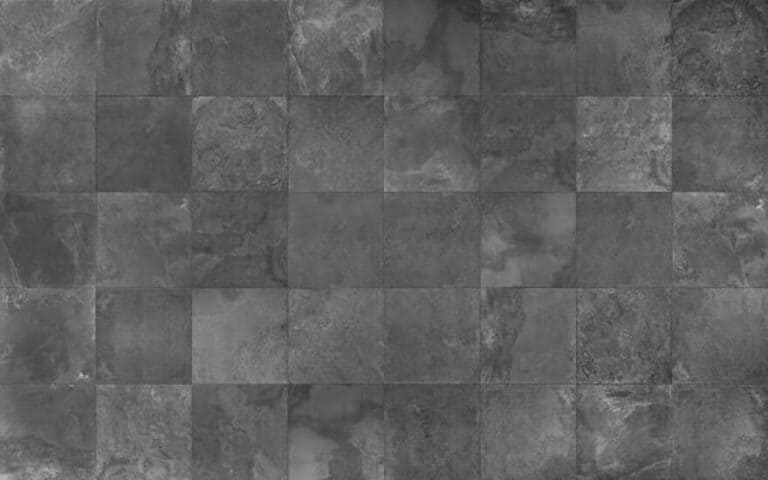Even if you lack experience or DIY skills, some simple tricks will make installing bathroom flooring without grout easy, safe, and fast.
Do you love the look of tile floors but hate the grout? Perhaps you’re renovating an old bathroom and don’t have time to re-grout when that leaky pipe bursts again?
Or maybe you don’t have the DIY skills to tackle grouting. Whatever your reasons, installing bathroom flooring without grout is an option worth considering. It’s not as scary as it sounds.
What You Need To Know Before Installing Bathroom Floor Tiling Without Grout
While there are several advantages to replacing bathroom flooring without grout, there are also a few things you need to know before you get started.
First, you’ll need to choose a non-slip shower protection material. You can use peel-and-stick vinyl, rubber, or cork tiles. You can also go with silicone mats or a combination of materials.
Second, you’ll need to ensure that the surface where you’ll be installing the tiles is clean and free of debris. If you are re-tiling, you’ll want to ensure that the subfloor is clean and dry.
Third, you need to be realistic about the time it will take you to complete the job. While you won’t need to mess around with grout, you will need to give yourself plenty of time to lay and seal the tiles.
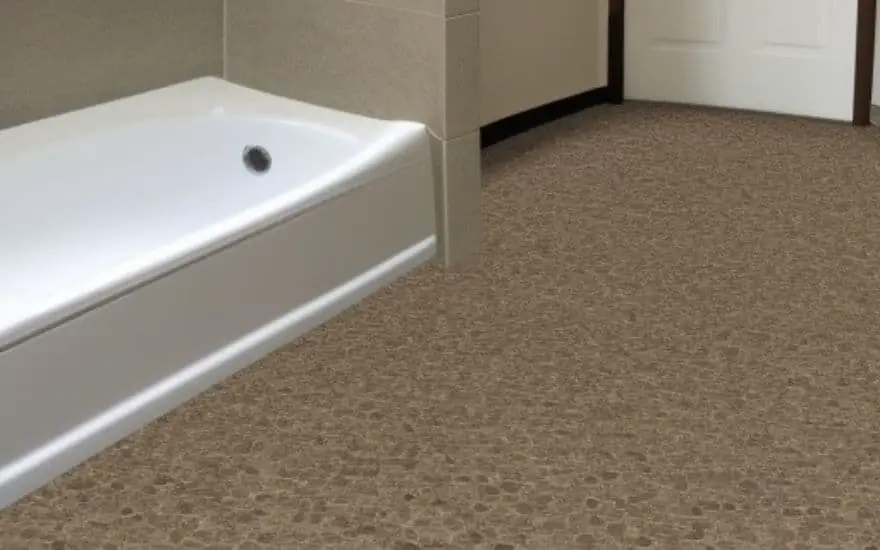
Tools You Need To Install Bathroom Flooring Without Grout:
Once you’ve chosen the material and prepared the surface, it’s time to gather the necessary tools for installing bathroom flooring without grout. These include
- A utility knife,
- measuring tape,
- scissors, level,
- caulk gun,
- and tile sealant.
You may also need a wet saw to cut your tiles.
Step 1: Clean The Surface
If you’re re-tiling, you’ll first want to clean the surface where you’ll be installing the tiles. Clean the surface using a sponge and water.
You can also use a mild soap or a degreaser if you have particularly dirty areas to clean. Clean any areas where you’ll be nailing or stapling the tiles to the subfloor. You’ll also want to clean the subfloor.
If you install bathroom flooring without grout over old tiles, you’ll need to remove the old tiles.
Depending on the condition of the existing tile, you can pry the tiles off or use a grout removal tool to lift the tiles.
Hold the existing tile up to a light to ensure the surface is free of debris or contaminants that could interfere with installing bathroom flooring without grout.
Step 2: Install Shower Protection
If you’re installing bathroom flooring without grout over an existing tile floor, you need to protect the tiles from damage during installation.
You can do this in a couple of ways. Choose a non-slip material for shower protection that is easy for you to install and won’t damage the existing tiles. For example, you can use cork tiles, silicone mats, or a combination.
If you’re installing new bathroom tiles, you can install the shower protection at the same time you install the tiles.
You can use a thin-set mixture or a premixed thin-set product specially designed for installing shower protection.
Step 3: Lay The Tile
If you are re-tiling, mix the thin-set mortar. You’ll want to use a thick or extra-thick mortar if you’re re-tiling over a concrete subfloor.
Mix the mortar and spread it over the installation area with a notched trowel. Let the mortar sit for 5 to 10 minutes.
This will give you enough time to arrange the tiles into a pleasing design. You can also use a thin-set mortar re-tiling over a wood subfloor.
This is a thinner mortar that is better at adhering to the wood. If you need to re-level the surface, you can use a scraping tool.
Step 4: Apply A Sealant
Apply a thin grout or thin-set sealant to the entire installation area. This will create a porous grout-like barrier preventing water from getting into the tiles.
For best results, use a premixed grout sealer. It’s available in various colors, which will help hide imperfections in the grout or tile seams.
You can also use a thin-set sealer or a premixed thin-set product specially designed for sealing tiles.
This product is usually white, although you can also find colored varieties.
What is flooring without grout?
Flooring without grout is a type of tile installation where the tiles are installed directly onto the subfloor or existing tiles using a unique adhesive instead of grout. This eliminates the need for tedious and time-consuming grouting work.
It also creates a waterproof barrier that helps to protect the floor from moisture, water damage, and potential mold growth. Flooring without grout is a great option for those who want to quickly and easily update the look of their bathrooms or other wet spaces.
Pros of installing bathroom flooring without grout
• Faster installation
• Easier to maintain and clean
• More durable than grouted tile floors
• Waterproof protection from moisture and mildew.
Cons of installing bathroom flooring without grout
• Possibility of tiles shifting over time due to lack of additional stability provided by the grout.
• Risk of air pockets forming between the tiles and subfloor can lead to water damage.
• Limited design options, as grout is usually used to create contrast between different tile colors.
What flooring does not require grout?
Vinyl floor tiles don’t require grout and make an excellent utility-grade floor. You can buy self-stick tiles or spread mastic on the subfloor with a notched trowel. Pressed tiles require more prominent grout lines, and the rounded edges allow a smoother transition. This tile is made in the USA. Known for high-quality standards, pressed tiles are an excellent choice for high-traffic areas. On the other hand, luxury vinyl flooring is designed to imitate the look of a tile floor without needing to seal the floor with grout. Also referred to as Clicks, groutless tiles are made of a solid backing, with no grout or sealer used to hold the tiles in place.
Cork tiles, silicone mats, or a combination of the two are good options for bathroom flooring that do not require grout.
Cork tiles can be laid directly over existing tile floors without additional preparation. They’re also waterproof and provide excellent insulation from cold surfaces.
Silicone mats are also an option for bathroom flooring that does not require grout. They’re easy to install, even for DIYers, as they can be cut to fit your installation area and placed into position.
Silicone mats are also waterproof and provide better insulation against cold surfaces than cork tiles. They’re also easy to clean since they do not require grout.
No matter which option you choose, it’s important to follow the manufacturer’s instructions for installation and maintenance. This is essential if you want your bathroom flooring to remain in good condition for many years to come.
Conclusion:
Installing bathroom flooring without grout can be a great way to get the look you want without some disadvantages of traditional grouted tile. However, it is important to consider both the pros and cons before deciding. If you decide that this route is right for you, our team at Floor Coverings International can help make the process easy and headache free.

